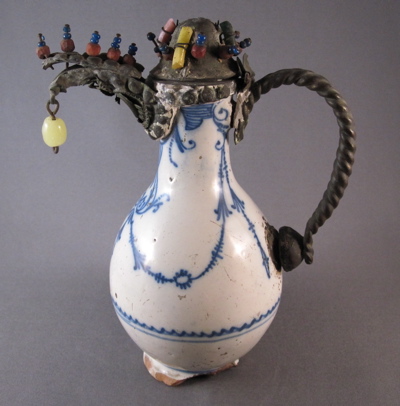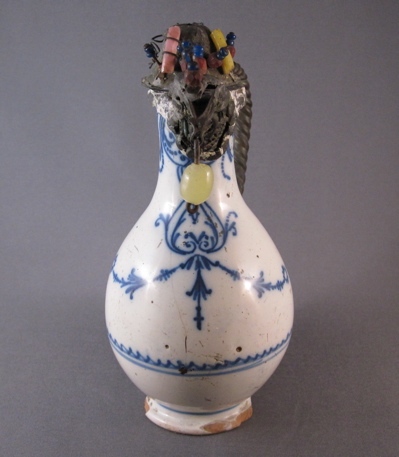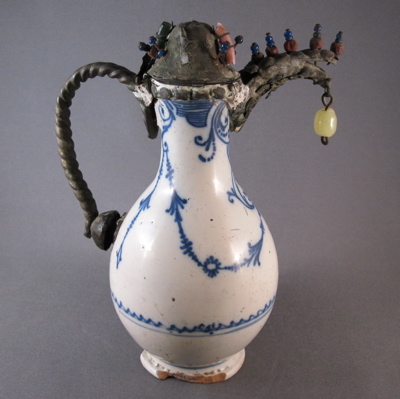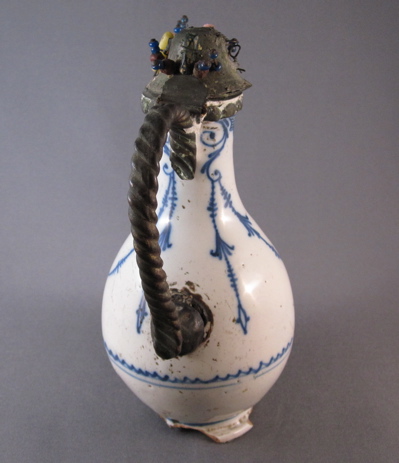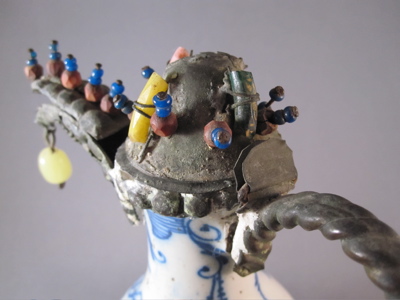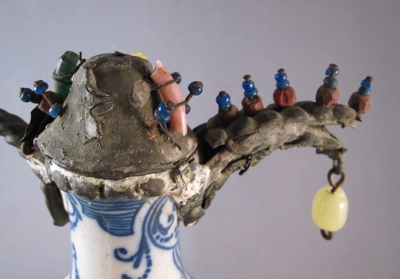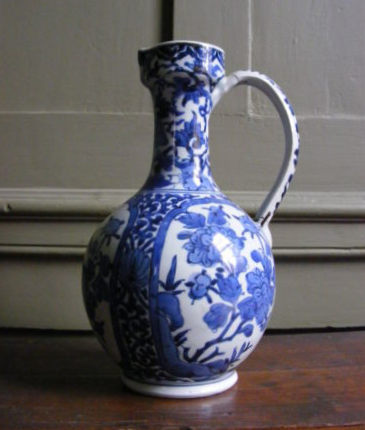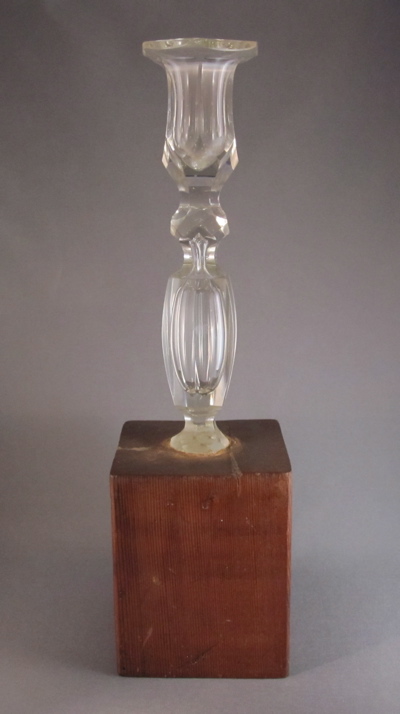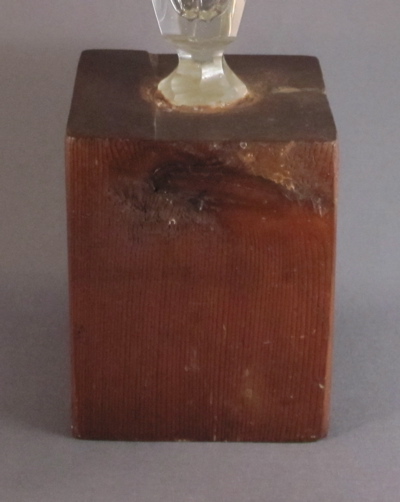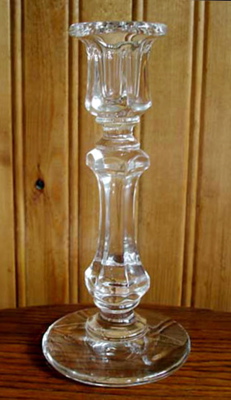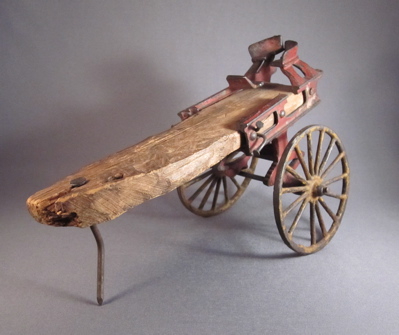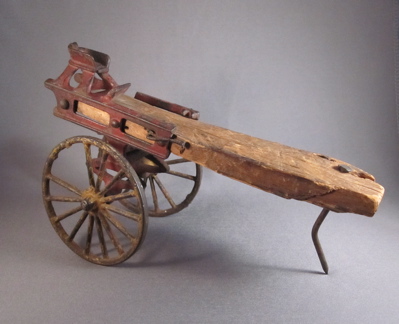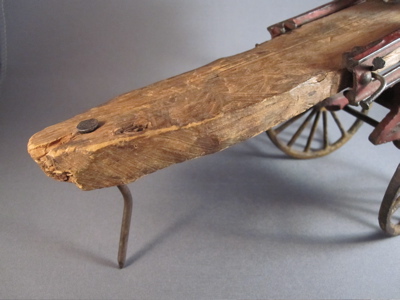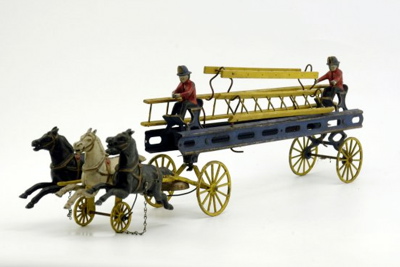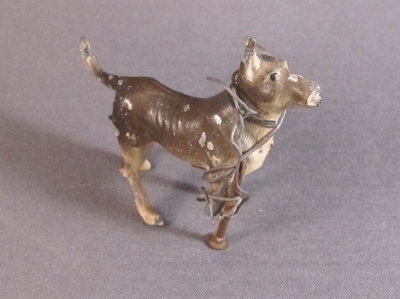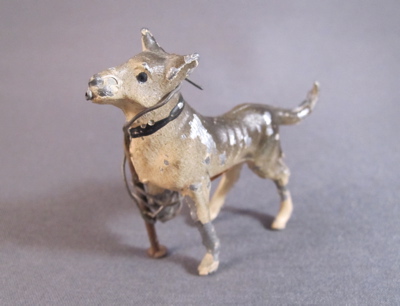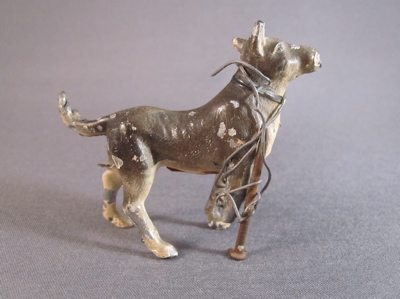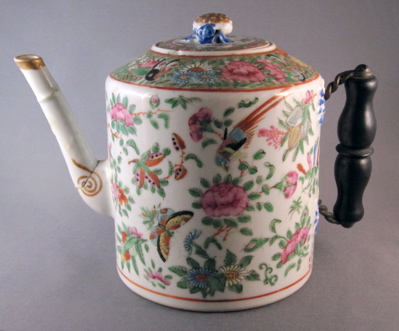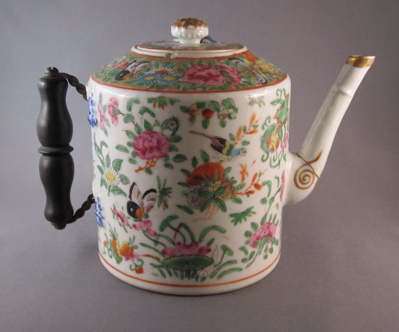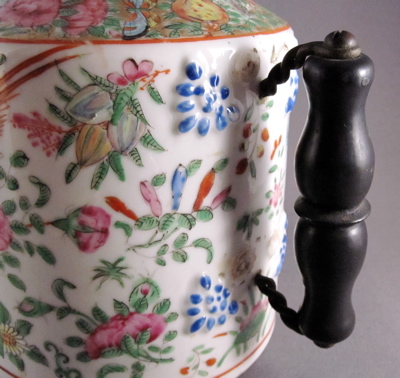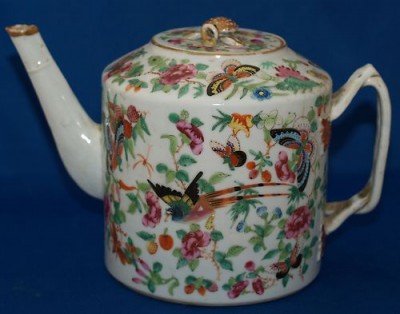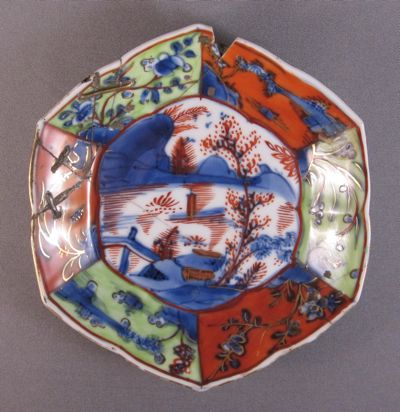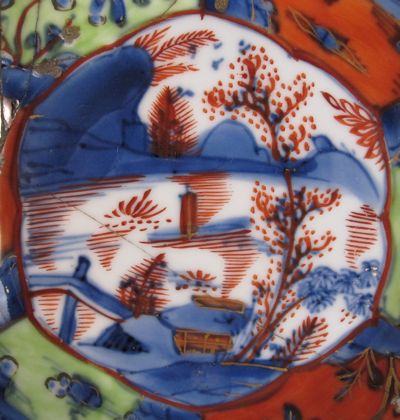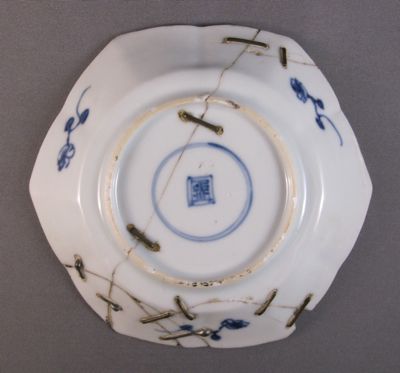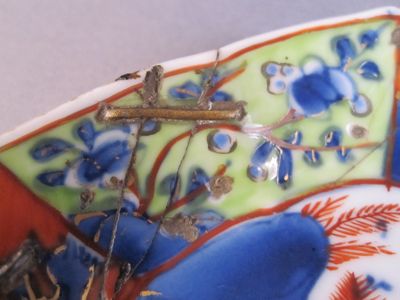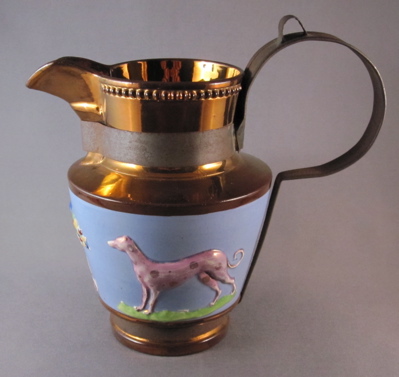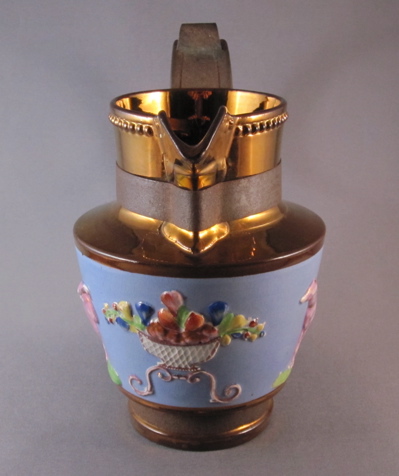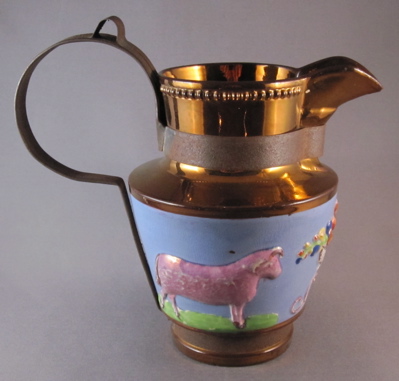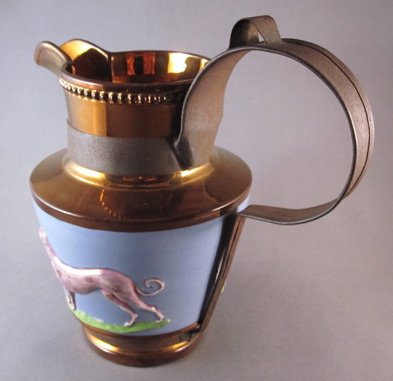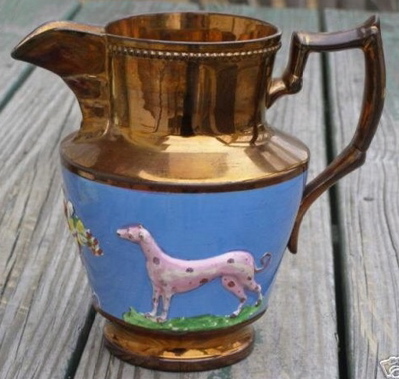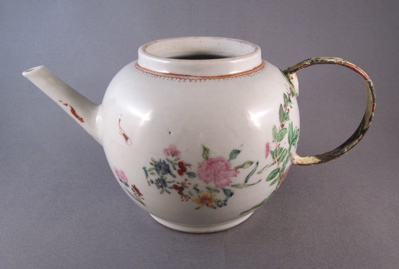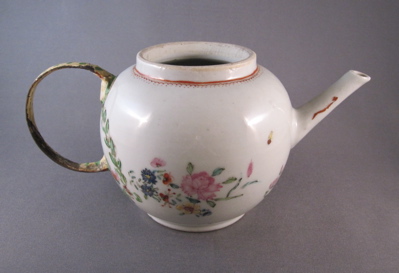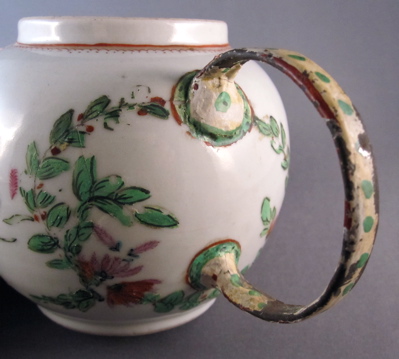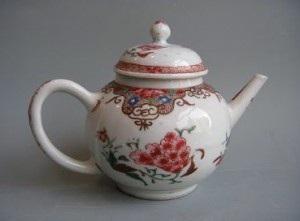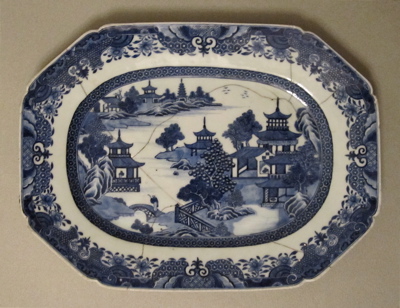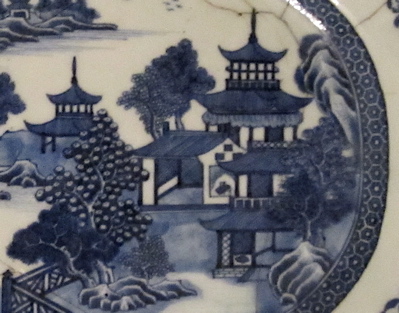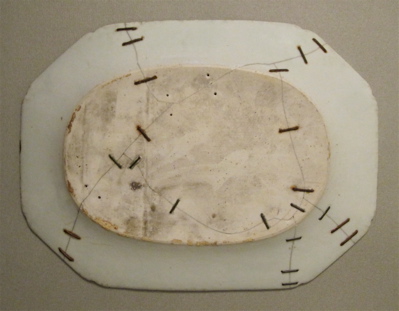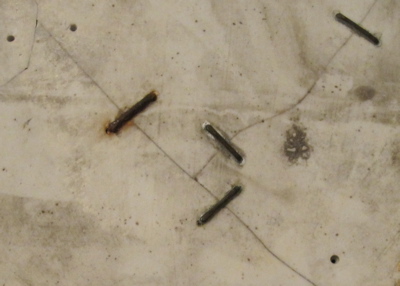…I have been fascinated with old broken things embellished with interesting repairs. My parents, dealers in antiques since the early 1960’s, would sometimes find items with quirky repairs in box lots from auction houses. Many dealers, like my parents, took these “damaged” pieces home to display, as they knew their discriminating customers were only interested in adding pieces in perfect condition to their collections.
As a child, I was intrigued by an early Staffordshire ABC plate on display in our kitchen; broken in half but somehow miraculously held together by a few metal staples on the back. I remember seeing in museums large urns, vases and platters with numerous rivets, looking a lot like Frankenstein’s monster. Pottery, porcelain and glass items with this type of repair are often referred to as having a “museum repair”, achieved by carefully drilling tiny holes on either side of a cracked surface and attaching a series of hand forged metal staples or rivets on either side of the cracks. Evidence of this type of primitive repair dates back to at least the first part of the18th century.
In my teens, my mother took me to an antiques dealer‘s house, filled with extraordinary folk art. I can still remember my first look at a collection of teapots high up on a shelf, each with a distinctive early repair. It was the first time I had seen handles, spouts and lids replaced with ones made of metal and wood. It wasn’t until about ten years later that I purchased an antique ceramic jug with a replaced tin handle and started amassing a collection of my own.
Determined to find examples for my new collection, I searched through antiques shops and flea market, asking dealers for pieces with early repairs. Although I explained that I was interested in the items for the repair itself, many dealers were offending at the notion that I thought they might be carrying less than perfect goods. Eventually one dealer said to me “Oh, you mean you collect “make-do’s”. I had never heard that expression used before but I soon learned that the term “make-do” is associated with items featuring, most commonly, folksy or crude home made repairs. I soon learned that I was not alone in my appreciation, as I met other collectors and dealers from around the world sharing in my passion for these often neglected antique orphans.
A dictionary definition of “make-do” states: “something that serves as a substitute, esp. of an inferior or expedient nature: We had to get along with make-dos during the war.” The origin is from 1890-95, much earlier than I suspected. As the term seems to have a taken on a negative connotation over the years, I much prefer using the term “inventive repair” to describe the embellishments on the pieces in my collection. In the pictures that follow, you will see examples of my own flawed beauties amassed since my first purchase in 1983.
